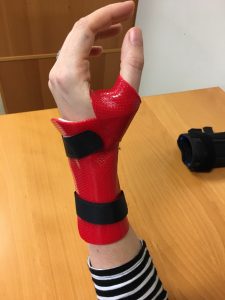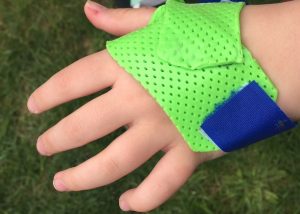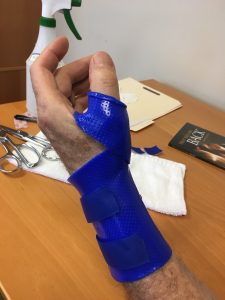Centralization of the Cervical Spine Mck Institute
https://www.facebook.com/140277053186246/posts/285374308676519/
More (formerly Mechanical Diagnosis and Therapy of Portland, PC)
(formerly Mechanical Diagnosis and Therapy of Portland, PC)
https://www.facebook.com/140277053186246/posts/285374308676519/
Morehttps://www.facebook.com/139184759454589/posts/2108271199212592/
Morehttps://www.facebook.com/139184759454589/posts/2099498133423232/
MoreI’d like to share with you a recent patient success story from Nick Rinard Physical Therapy. Our story begins with a 10 year old girl (we will call her Artemis for this article) who had a disastrous landing while playing on her trampoline in her backyard. Artemis’ back injury was very upsetting to her because it occurred just a few weeks before her end of the year dance recital. She was frustrated because her attempts to participate in dance class weren’t going well despite her desire to succeed. She was unable to lift her leg above her knee level due to her back pain. Thankfully, her parents were proactive and brought her to our clinic for treatment just 3 days after her injury.
When I examined her, Artemis was having difficulty finding a comfortable position sitting on the exam table. Pain was driving her to fidget and her restlessness was creating fatigue which further aggravated her symptoms in a vicious cycle. Even her walking pattern had been altered, and she had a difficult time separating the movement of her shoulder and hip on the left side.
Artemis’ treatment plan targeted stretching of her injured muscles, restoring normal movement patterns, and building strength in her lumbopelvic stabilization muscles.
Due to timely intervention and excellent follow through with her home exercise program, Artemis made a full recovery and was able to shine on the stage for her dance recital!
So, if you or your children are being limited by injury, take a lesson from Artemis’ excellent example and seek our help sooner rather than later. We’ll get you back on your feet and performing at your best! The show must go on!
Morehttps://www.facebook.com/139184759454589/posts/2075892472450465/
Morehttps://www.facebook.com/McKenzieInstituteUSA/posts/2022867281086318
Morehttps://www.facebook.com/McKenzieInstituteUSA/posts/2019414714764908
More


Have you self diagnosed… gone down the medical equipment aisle, picked out a brace you thought would help only to find you are still in pain months later? One size does not fit all. Correctly knowing what you are splinting and why makes all the difference. There is no reason to live with hand pain, when all it takes is a splint made just for you by Natasha Rinard OT. to get immediate relief!
Morehttps://www.facebook.com/mckenzieinstituteinternational/posts/232228973991053
MoreWhile treating a patient at the clinic last week, I was struck with her bravery. She described having previously sought physical therapy treatment for her injury at a different clinic. She had the discouraging experience of being treated by a different person at each appointment, and felt she had to explain her injury again and again. She says she was given a “one size fits all” exercise handout and when she was not successful with the exercises, no adaptations were offered to her.
Amazingly, this lady had the courage to self-advocate for better care. How many like her would be stranded at an impasse? She had the good fortune of having a friend who recommended the Nick Rinard Physical Therapy team to her. I’m happy to report that she is excelling here and is now ready to continue independently much sooner than expected.
Nick Rinard Physical Therapy is a specialty type of physical therapy which helps most people. The methods we use are the most scientifically valid in all of physical therapy today; and all of our therapists are trained in this specialty of mechanical diagnosis and treatment. From the patient’s perspective, you will undergo a thorough evaluation designed to find the true cause of your pain or symptoms. The main aim of the evaluation is to determine whether the pain is “mechanical” or “non-mechanical.”
If it is mechanical, and it is treatable, then you will start a corrective program on day one that is custom designed to suit your needs. We also equip all of our patients with a home exercise program and the tools they need to prevent this problem from recurring in the future.
You deserve to be individually evaluated, treated, and supported in a plan of care that is scientifically valid and effective. If you have had a disappointing physical therapy experience at another clinic, we urge you to come see us and let us demonstrate the difference that our high quality, dedicated staff can make for you.